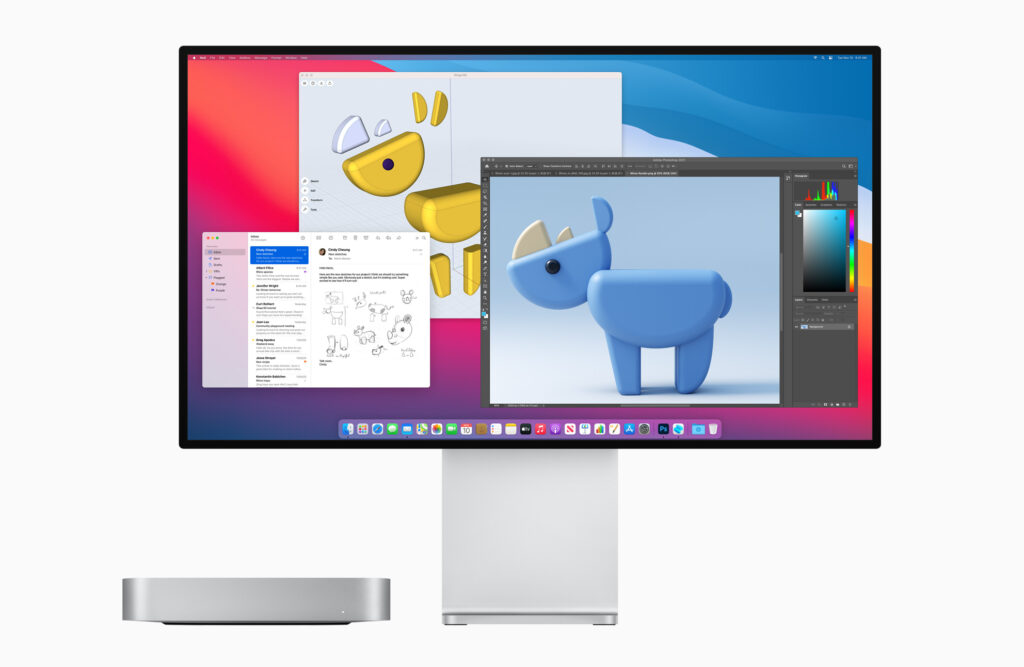How do I even begin to describe the new Apple Silicon M1 powered Mac Mini except with one very simple word: “Wow!”
Having read and seen the review from all of the Internet (well, at least from countries where Apple had chosen to launch these devices first), I couldn’t wait to get my hands on the new Mac Mini.

Now Apple released 3 machines powered by their new M1 Apple Silicon chip: MacBook Air, MacBook Pro and Mac Mini. The same chassis that was designed years ago for the Intel chip still houses this new Apple Silicon M1 chip. Each is as indistinguishable as their older brethren from the outside save for lesser ports.
I chose the Mac Mini because it was the cheapest and the most powerful one. It has a desktop class fan system which should reduce thermal throttling. This was an affordable way to experience the hype without needing to replace my 2 year old MacBook Pro. It’s a pain to upgrade again when the new crop of designed-for-Apple-Silicon MacBooks pops up half a year later.

Apple Malaysia only started taking pre-orders on the 10th December and 12 agonizingly long days later, I finally got my hands on one. I won’t go into benchmark tests as these are covered extensively everywhere. Instead the focus will be on the experience of using an M1-powered Mac as a main daily driver.
Easily noticeable was the speed of launching and using apps. My Mac Mini feels superfast. The windows refreshed quickly. There are no lags on the UI. Everything feels extremely snappy even though I have various apps launched in the background. My workflow of moving between virtual desktops (as opposed to using multiple physical monitors) felt zippy.
Every app that I use on a daily basis (Teams, Outlook, Slack, Whatsapp, Tidal) work better than they did on my current MacBook Pro. This includes all software marked as Intel, Apple Silicon or Universal. “Heavy” apps like Photoshop and Lightroom surprisingly work perfectly even though native Apple Silicon versions are not available yet.
I’ve been through 2 major Apple transitions, the first from MacOS 9 to MacOS X. The second is from PowerPC to Intel. Both were quite painful.
Apple created “Classic” operating environment where a software emulator was loaded to launch the older OS 9 apps to work in the new OS X for the first transition. It was slow and clunky. Drivers didn’t work properly. The new unstable MacOS X with its heavy UI/UX bells-and-whistles also resulted in a huge performance penalty.
To help with the second transition, Apple created Rosetta, a software-based translation that took applications written for PowerPC to Intel. Again, this was slow and clunky. And the associated incompatibilities for program that had to access hardware level calls (like drivers) were present.
This time around for the move from Intel to Apple’s own design chip, we have Rosetta 2. Now Rosetta 2 is slightly different as it runs as an invisible wrapper to do real time transcoding of Intel based instructions to Apple Silicon instructions. To help with this, the Apple Silicon M1 has hardware acceleration built in to process these as native instructions.
This is a very clever way that only Apple can pull off based on their philosophy of integrating hardware and software so tightly that they squeeze every ounce of performance from their systems. This explains why some Intel-optimized apps work so well on the M1 system-on-a-chip machines. No Apple Silicon Adobe Photoshop? No problem, the Intel one works as well or even better with Rosetta 2.
I’m excited now but I am more stoked about the future. Newer, more powerful chips are coming. These chips will contain more efficient and high-performance cores. Power management will also improve as evidenced by Apple booking out the entire 2023 3nm fabrication production supply from TSMC.
There will also be a redesign of the hardware to take advantage of the characteristics of the chips. These Apple Silicon runs cool and requires less battery to run. For the notebooks, we can expect even thinner designs coupled with other advantages like high performance graphics, security and IO performance (all built-in thanks to the Apple Silicon system-on-a-chip design).
Apple now have 3 form factors that uses the same hardware architecture. The use cases are pretty clear (better power management, better photography and videography, tighter security) but the use cases for iPad and notebooks are pretty similar. Technically, they are close genetic cousins that have more overlapping use-cases than unique ones. Perhaps a consolidation is coming where more powerful non-pro use-cases will be moved to iPad-like future devices while the processing intensive pro use cases will reside on the more traditional clam shell or desktop designs.
Regardless, the future for Apple computing devices look very bright.
